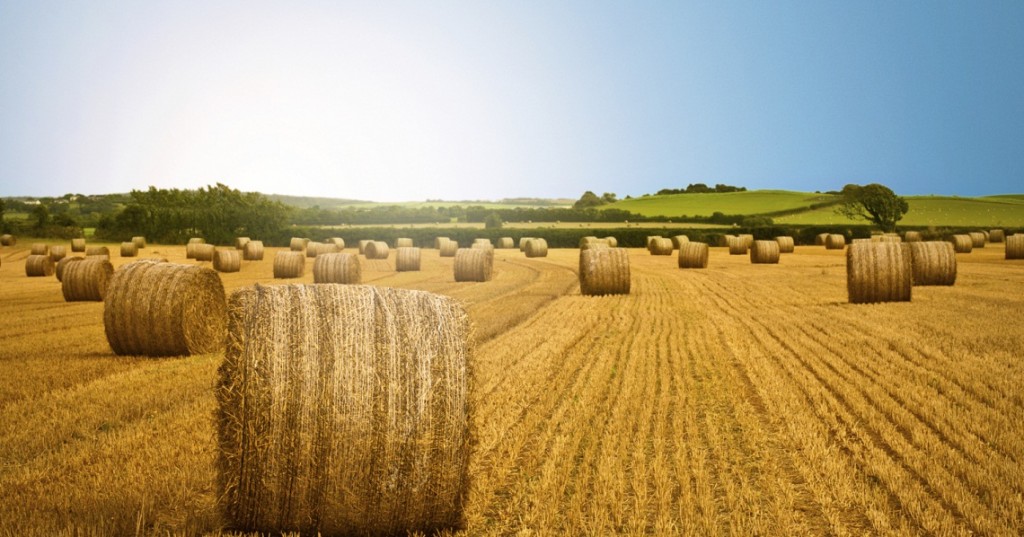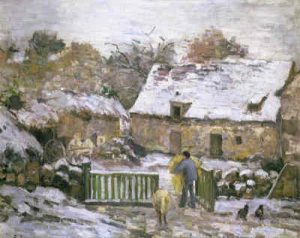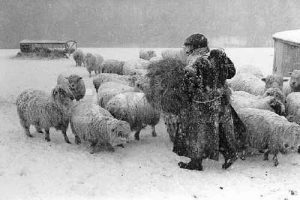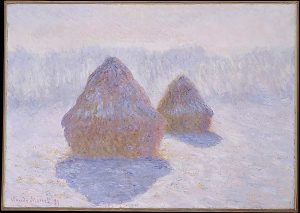
I had a very indistinct idea of hay when I came back to country living. We see the big round bales from speeding cars and have encountered haystacks in cowboy movies, cartoons and fairy tales.
Now, for me, hay is central to winter well being.
The stock need it when the pastures brown out for winter; the chickens search the hay for bugs and greenery they like; the dogs bed down in it and I use it to put an 8-inch mulch throughout the garden.

My morning chores on my little farm require moving the hay by hand. This is a clean and relatively modest amount of work; and at least I do not have to work in the ice and snow as the poor souls pictured. It is comforting that this particular job has stayed almost exactly the same for
 hundreds of years. Of course, large enterprises use tractors and other mechanized vehicles. But with only a few animals, one just grabs an armful of hay and gets the job done.
hundreds of years. Of course, large enterprises use tractors and other mechanized vehicles. But with only a few animals, one just grabs an armful of hay and gets the job done.
Hay has been a mainstay of human farming for hundreds of years. Great artists were familiar with its substantive beauty. Monet painted over 30 pictures of hay; Van Gogh, dozens. Up to the middle of the last century over half the population of the United States farmed; and many non-farmers kept horses. All of whom were undoubtedly well versed in the hundreds of “hay facts” that form no part of our lives.
Perhaps our education should include more basics. Traveling across the country, one looks at fields of big round hay bales; until recently they just did not register in my mind. I have one one on my front lawn now so I ‘see’ it. We travel on roads of concrete and asphalt without much idea of what’s in the roadwork. We zoom past trees and plants that few people can name. This is our environment and we pay little attention to it.
We seem to stuff our heads with facts that have nothing to do with our environment; we use the word in an abstract way and fantasize about ‘saving’ it. I imagine the French cottager in the beautiful Camille Pissarro painting above knew what his roads were made of and knew the names of the plants and trees surrounding his home. The Rumanian feeding his sheep in the James Ravilious photograph above would have understood his environment in order to survive–or to live well– in what appears to be a cold and demanding world.
How can we educate and reeducate ourselves and our children to get in touch with and demand to know about what is around them, what is in front of our eyes, under our feet and wheels. Before we can save anything we need to ‘see’ it–see and know about our privileged world of ease and beauty.


 hundreds of years. Of course, large enterprises use tractors and other mechanized vehicles. But with only a few animals, one just grabs an armful of hay and gets the job done.
hundreds of years. Of course, large enterprises use tractors and other mechanized vehicles. But with only a few animals, one just grabs an armful of hay and gets the job done.